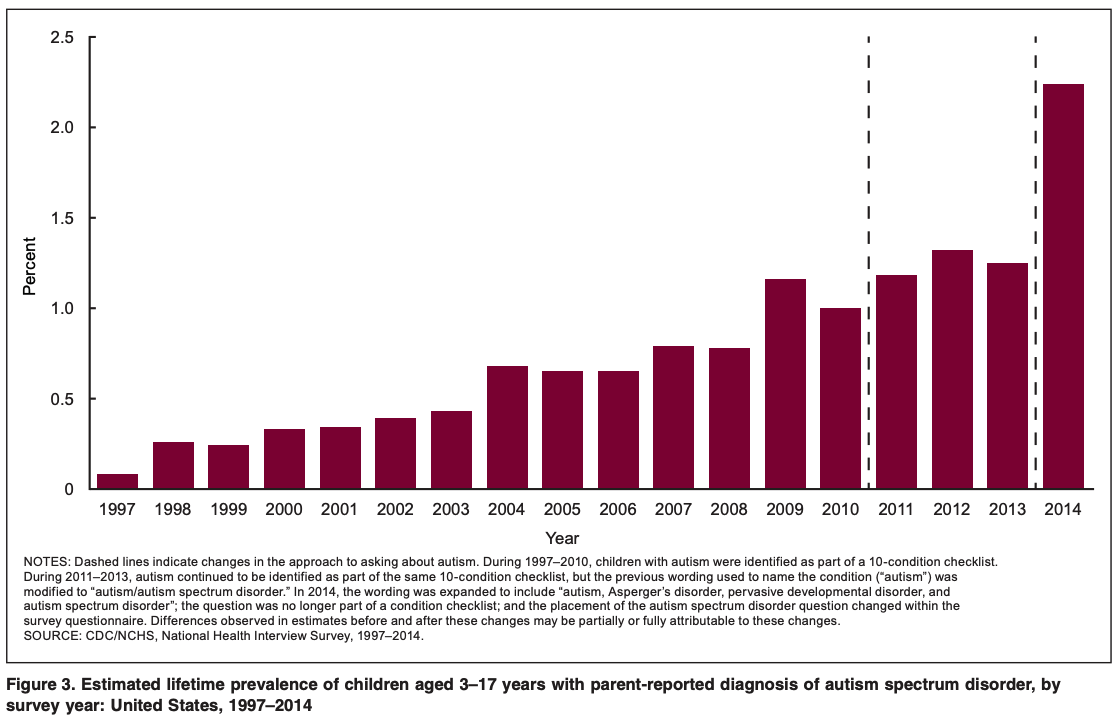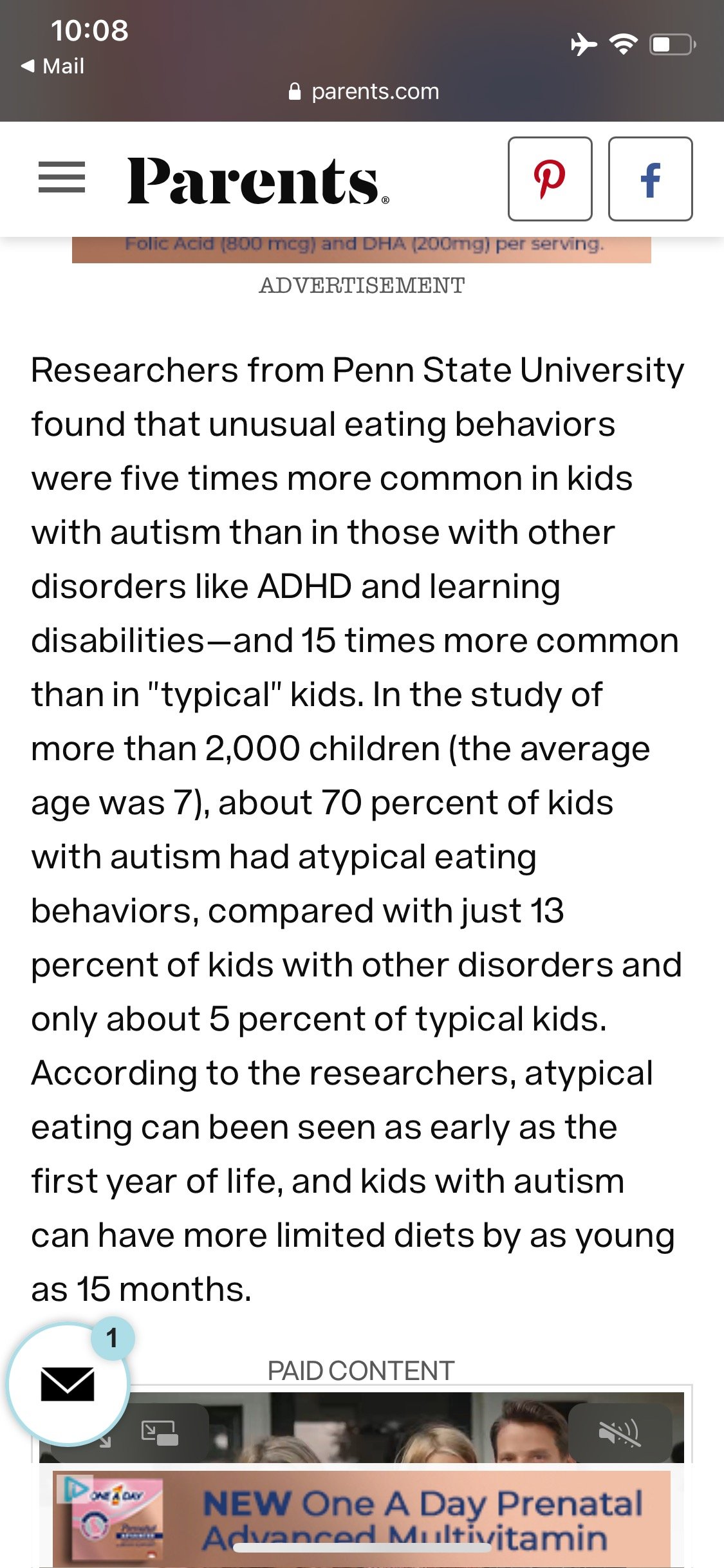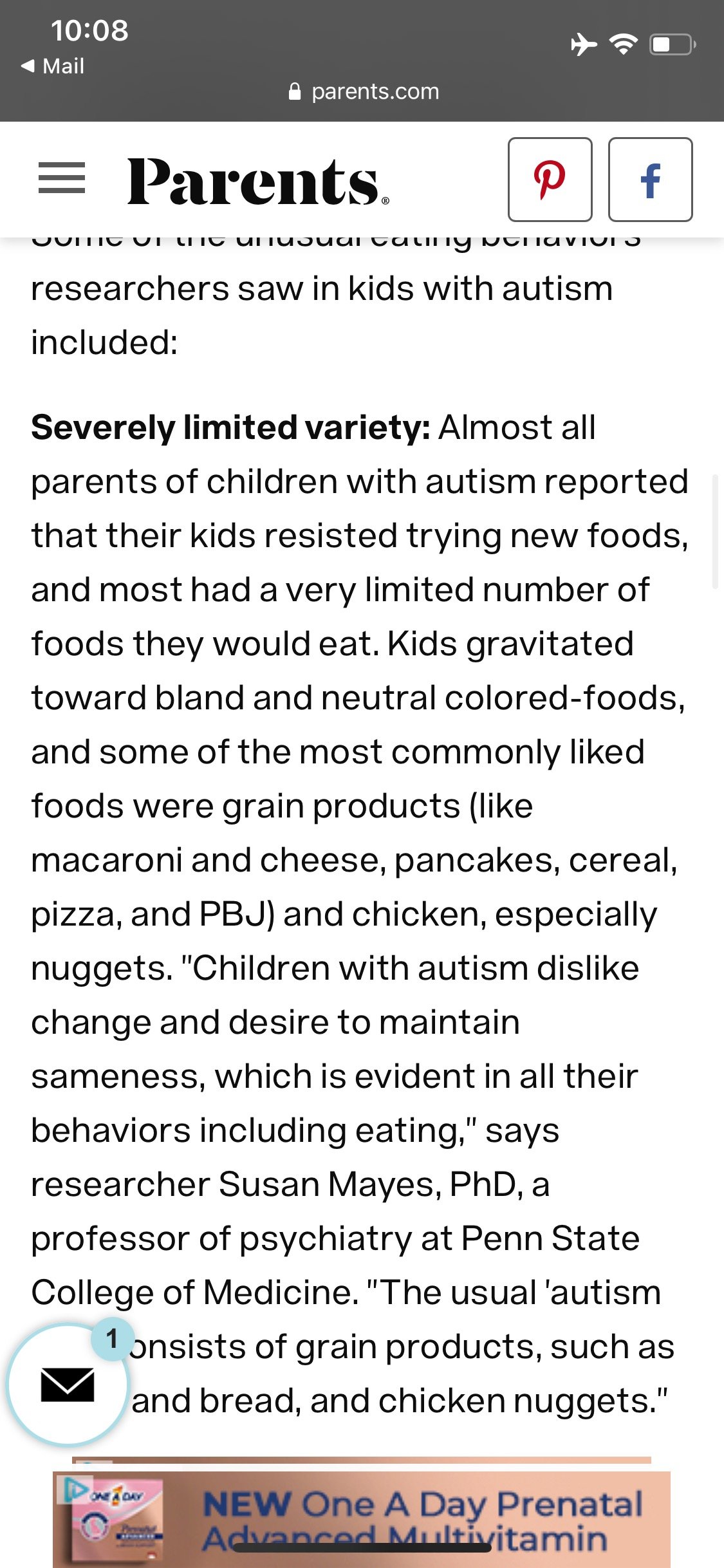Baby Vaccines
Let’s talk about vaccines. Sensitive topic, but nothing should be off the table for discussion! Ever. Especially about your baby.
Most important points
There are simple ways to protect a child when it comes to vaccines:
Never let them get a vaccine while they are sick.
Never give them tylenol after a vaccine (as this holds in toxins meant to be eliminated. The pain reduction is minimal anyway).
Certain BRANDS have more harmful ingredients than others.
Two of my favorite books on the topic are:
Vaccines have not been studied in COMBINATION, in the way they are given to babies in real life. They have only been tested individually, and medicines are known to be chemically reactive in combination (and double/triple the amount of harmful chemicals at once).
Side effects with vaccines may be “rare”, but can be devastating, and tend to happen when:
babies are already sick, and their immune system is fighting something else (if your child is sick when you are supposed to go to a vaccine appointment, just reschedule!).
vaccines çause problems if the baby has kidney problems (and their body has trouble detoxifying the ingredients of the vaccine, which were meant to be removed quickly).
Following the CDC schedule means exceeding the FDA limit for an adult level of toxic metal exposure at every baby visit. (that limit based on a 135 lb adult, so baby exposure should be 1/5th of that given!)
The CDC has not added up the real life levels of aluminum as given per their schedule. When given in combination (not individually, as studied), the FDA limit of aluminum is exceeded, giving an overdose of aluminum to babies at almost ALL vaccine visits in their whole first years of life (only ONE visit as prescribed is under the ADULT dose of maximum aluminum in a day).
Some brands of vaccines have 3x the dose of heavy metal toxins (aluminum and mercury) than others. And you pick the doctor. So pick the doctor that supplies the (low-toxic) brands you want!
Avoid giving Tylenol to your child when they get a vaccine. Acetaminophen blocks glutathione, which helps the body detoxify the heavy metals in the shot (neurotoxins).
Autism appears to be affected by the gut, which changes daily based on the food you eat.
Aluminum, a common vaccine additive, is known to be toxic, especially to the brain.
Safe level are discussed for all products made in the US including medicines. But not vaccines. And, babies are given much more aluminum in their vaccines than allowed in other products (like injectable medicines and IV drips).
Do extra research if:
your baby has kidney issues (related to detoxing, removing the toxins in vaccines)
your baby has auto-immune issues (many vaccines contain formaldehyde, which helps trigger an immune response, and can trigger autoimmune disorders)
you or your baby has known MTFHR mutations
autism runs in your family (or other microbiome challenges, including alzheimers)
Breast feeding protects from infection. It contains antibodies that coat lining of nose, lungs and intestines, so most germs get killed when inhaled or swallowed.
If parents want to avoid vaccines, then first response from informed doctors is to BF baby for at least 2 years. Breast milk passes on so many antibodies to baby.
In 1986, Reagan gave exemption to vaccine manufacturers from all liability for vaccine injury. Since then, the number of vaccines recommended for children has more than doubled.
It’s an incredible business model: no liability, no oversight, no testing, then mandatory for school.
And the reporting process makes it almost impossible to prove vaccines are associated with any kind of problem. (Self reporting programs are linked below).
Some naturopaths have programs designed specially for children to help boost their immunity while taking vaccines.
You can pick a pediatrician based on BRAND of vaccines. more important than if the doctor is nice, is that they are not overdosing on heavy metals.
JUST ASK: what brand used for DTAP? most offices use a combo vaccine. if they split it up, that is best. of the most popular:
Pentacel: Least aluminum combo with DTAP
Pediarix: (HIGH ALUMINUM CONTENT), over adult daily dose based on FDA.
Why it is important.
I chose vaccines that have 1/3 the dose of toxic aluminum as other popular brands.
The most popular combo vaccine for babies (every 2 months from birth) has more aluminum than an adult limit per day.
The TDap vaccine that is recommended for pregnant women and 11 year old children has TWICE the adult size limit of aluminum in a day. (Remember, these toxins in a pregnant woman go straight to the unborn baby as well, at their most vulnerable stage).
The main problem is lack of communication between government organizations. There is no one unit that overlooks drug safety for infants. Nobody is looking at the big picture.
Individual COMPANIES study effects on children, and NOT in combination, as they are given in real life.
The FDA provides recommended limits to drugs, only for adult dosages, and enough to give an immune response.
It is illegal to test on children.
When it comes to toxic chemicals like aluminum and mercury for babies, they just say limit as much as possible. No safe limit exists. Every body can react to microscopic levels of toxins.
The CDC recommends drugs based on schedule, not on safety.
They do not consider total toxic load, or FDA immune response limit.
The CDC suggestions EXCEED the FDA recommended daily exposures for ADULTS, meaning they exceed infant limits by 5-10x.
Only parents can keep track. And only parents can really notice daily changes in babies.
Doctors today are not like family doctors of the past that could recognize and remember every single child. Labor laws mean various care givers, and insurance models mean seeing as many children as possible. Insurance models also mean giving doctors little time to research new information about vaccine safety.
Becoming educated
YOU have the choice in vaccine brands, and schedule
There are various choices when it comes to vaccines. There are popular combination shots, as well as various manufacturers for the same vaccine. But all are not equal:
Combo shots tend to have additional toxins in them to help preserve the medicine, or added so the package can be opened for longer to give to multiple babies.
And some brands have more heavy metals than others, including aluminum and mercury.
All pediatricians choose what brand of shots they give to their baby patients. And you choose your pediatrician. In that way, you have the ability to get the kind of vaccine you want.
I literally called around various doctors offices and asked what brands of vaccines they give for the important ones (DTAP, etc), and chose our family doctor from there. It is THAT important. I mean, is the personality of the doctor really more important than heavy metals entering your babies’ blood stream?
There is still a lot we dont know about how vaccines work
All vaccines not equal, and all have unexpected effects.
The only truth is that vaccines are neither 100% safe, nor 100% effective
Vaccines inherently contain things that are bad for you:
preservatives, to prevent contamination (bacterial or fungal)
adjuvants, substances that CAUSE inflammation to activate immune system
often contain mercery or aluminum (toxic to kidney and nervous system)
Auto immunity also introduced by adjuvants
heavy metals (to be patented, cant just patent plants legally)
Comparison of Aluminum in Vaccine Choice
Red numbers above shows doses that exceed the FDA limit for adults of FDA’s limit. Blue shows brand with low (or no) aluminum levels of chosen Vaccines
The FDA has recommended limiting injected doses for adults to 850 μg (micrograms), the smallest amount to induce an immune response in adults.
Red numbers above shows doses that exceed the FDA limit for adults of FDA’s limit.
Extrapolating from the recommendation for a 132 lb adult, aluminum limits would be:
Premie (or any baby with kidneys not working yet): 25 mcg Al TOXIC LIMIT
though, in comparison, the CDC recommends Hep-B for a newborn, which has 250 mcg Al (10x the limit).
this is the only limit that has been studied, and is much lower than the extrapolated doses below
10 lb child: 64.4 mcg Al
20 lb child: 129 mcg Al
Most babies weigh under 20 lb during their first year, when they get majority of their vaccines. I would argue this is the limit we should use for the first year. But almost all vaccines exceed this limit.
30 lb child: 193 mcg Al
40 lb child: 257 mcg Al
132 lb adult: 850 mcg Al
Reality of Aluminum dosages:
Hep B: 250 mcg Al, AT BIRTH
recommended CDC schedule for vaccinations says a newborn, still in the hospital, will receive their first Hepatitis B vaccination for a total of 250 mcg Al on their first day of life. Are their kidneys/liver mature enough to handle that large dose? Are you willing to trust that?
DTaP (diphtheria, tetanus, and pertussis): 170–625 mcg, depending on manufacturer
Hepatitis A: 250 mcg
Hepatitis B: 250 mcg
Hib (for meningitis; PedVaxHib brand only): 225 mcg
HPV: 225 mcg
Pediarix (DTaP–hepatitis B–polio combination): 850 mcg
Pentacel (DTaP–Hib–polio combination): 330 mcg
Pneumococcus: 125 mcg
Vaccine Safety
No study has been commissioned to study the prevalence of autism next to the full schedule of vaccines as suggested by the CDC. Without enough studies, there is a case to be made for caution.
Until a large double-blind study comparing unvaccinated children with vaccinated children is done, we cannot rule out the current American vaccination schedule as a contributing factor in autism.
A lot of loud people claim to have “debunked” the connection of vaccines and harm to children (and refuse to discuss it).
However, our science does not allow us to ever PROVE safety. Nobody can ever prove something is truly safe. We can only ever keep showing CASES where it seems to be safe, until we find instances where it has not. There is evidence of both of these.
And with babies, we SHOULD focus on the hard cases. Tough examples only show symptoms of a bigger problem. (where there is one ant, there are many more nearby).
Safety research is always a waiting game. (and we have some good research to look at already!) And regardless with babies, we should err on the side of caution.
Red flag #1: when a doctor says there is NO evidence contrary to vaccines.
No evidence is NOT proof of safety. Plus, THERE IS EVIDENCE, they just haven’t read it. At best, all anyone can say for certain is they have not heard anything YET. Then you can ask them to look at the data, or read a book on the subject.
And there are no long term studies that even address the idea that aluminum poisoning at ANY age DOES NOT lead to future neurological health conditions. It is impossible to design a study like that that would cover 3-5 decades to try to make a connection. And, there is no incentive to design those studies. They would obviously possibly lead to more fear of vaccines than there already is. Bad for business.
Where is the vaccine warning label?
For all injectable medications, the FDA issues a clear warning on all packaging, which is missing from the packaging of aluminum containing vaccines:
WARNING: This product contains aluminum that may be toxic. Aluminum may reach toxic levels with prolonged parenteral administration if kidney function is impaired. Premature neonates are particularly at risk because their kidneys are immature, and they require large amounts of calcium and phosphate solutions, which contain aluminum.
Or the warning for premature infant.
According to the FDA, a toxic dose for a premature newborn (or any baby with kidney not working properly yet), would be 10 to 20 mcg (micrograms). Exposure to aluminum in doses higher than this can accumulate at levels associated with central nervous system and bone toxicity. It can overload tissues at even lower rates.
Common combination vaccines:
If you can, try to avoid combination vaccines. They were created for convenience, not for best health outcome for your baby.
Objections from doctors tend to be quite unscientific: the baby won’t like the doctor’s office if they have more shots. NOBODY LIKES SHOTS, that is not the point. The scientific fact is your baby’s toxic limit is exceeded unless we space these out.
Example of aluminum levels for DTAP combo vaccine:
Pentacel (330 microgram Al) (Dtap, Polio, Hib)
equivalent to single doses over multiple visits
Pediarix (880 microgram Al) (Dtap, Heb B, IPV) 3x more Al*❗️
🟥 FDA limit on aluminum per day: 850 ug (micrograms) for an ADULT of 135 lbs. There is no known safe limit for a child.
*Aluminum is a known neurotoxin❗️The CDC vaccine schedule exceeds this max limit for ADULTS at all (but 1) baby vaccine visits.
From the doctors who look at the evidence
Several doctors have written about this, but no studies have been done to prove their results on a mass scale. The facts are that autism is scary, and today 1 in 45 children are on the spectrum (and growing).
Doctors who have paid attention have seen ZERO cases of autism when parents follow a few simple protocol, including:
Becoming educated on the basics of vaccines
and learning how to best help your baby remove the bad stuff in vaccines
Avoiding toxins like
acetaminophen (Tylenol)
aspartame (fake sugar)
glyphosate (pesticides, aka go organic)
“kids food” menus
Lifestyle
Eating real food
getting enough vitamin D (or sun)
exercising (playtime and fresh air outside)
Two books go into detail on various options regarding vaccines, and they seem to be pretty in sync:
The Vaccine Friendly Plan, by Dr. Paul Thomas
Details on Various Vaccines
Notes on individual vaccine choices, per the Vaccine-Friendly Plan
Hepatitis B (CDC recommends @ birth, 2 months, 3m)
Say no, unless birth mom has it. Contains 250 micrograms of aluminum per dose. This is simply too much for a newborn.
If mom has it, baby should get the Hepatitis B vaccine at
birth (along with Hepatitis B immune globulin)
1-2 months
and at 6 months
The vaccine works best within the first 5-10 years of its use (and not recommended twice). It is recommended to wait until the child’s teenage years or when closer to being sexually active to give the MOST protection.
Hepatitis B is caught from exchanging bodily fluids, during sex, or IV drug use with contaminated blood
If you plan to travel to a country where hepatitis B is endemic, this vaccine may be necessary. (Africa has the highest infection rate).
DTaP (CDC recommends @ 2 months, 4m, 6m, 15m, and 4 years)
Use the low aluminum option if offered: Daptacel for DTaP.
The Tripedia brand contains trace amounts of mercury in addition to aluminum.
The Infarix brand has the most aluminum: 625 micrograms.
All available brands contain 100 micrograms of formaldehyde, which can trigger autoimmune disorders. Formaldehyde helps trigger an immune response.
This vaccine has 330 to 625 micrograms of aluminum, depending on brand (880 is the adult daily limit). Only give one aluminum containing vaccine at a time. Wait 2 to 4 weeks between aluminum containing vaccine injections:
DTaP, Hep B, Hep A, Prevnar, PedVax, some Hib brands, HPV, Pentacel, Pediarix, Bexero, Trumenba.
Prior to 1990 we used a whole cell DPT in the USA that caused severe side effects, including seizures, brain damage, and death. The formula has since been updated.
TD: The “adult” version of DTaP vaccine, recommended in pregnancy and at 11 years old by the CDC
The TDap vaccine is recommended for pregnant women and 11 year old children has TWICE the adult size limit of aluminum in a day. (Remember, these toxins in a pregnant woman go straight to the unborn baby as well, at their most vulnerable stage).
I chose to skip this one in pregnancy, as I had already had it.
Hib (CDC recommends @ 2 months, 4m, 6m, 1 year)
Use the low aluminum option if offered: Acthib for the Hib.
Choose the ActHIB brand, which has the HIB sugar with tetanus toxoid, saline and sugar water.
The PedVax brand has 225 micrograms aluminum and should be avoided.
This vaccine has 0 to 225 micrograms of aluminum, depending on brand (880 is the adult daily limit). Only give one aluminum containing vaccine at a time. Wait 2 to 4 weeks between aluminum containing vaccine injections:
DTaP, Hep B, Hep A, Prevnar, PedVax, some Hib brands, HPV, Pentacel, Pediarix, Bexero, Trumenba.
Prevnar – 13 (CDC recommends @ 2months, 4m, 6m, 1year)
This vaccine replaced the Prevnar – 7, by adding more strains of the pneumococcus, the bacteria that is the second leading cause of bacterial meningitis in children.
This vaccine has 125 micrograms of aluminum (880 is the adult daily limit). Only give one aluminum containing vaccine at a time. Wait 2 to 4 weeks between aluminum containing vaccine injections:
DTaP, Hep B, Hep A, Prevnar, PedVax, some Hib brands, HPV, Pentacel, Pediarix, Bexero, Trumenba.
Polio (CDC recommends @ 2months, 4m, 6m, then 4 years)
IPV. The Injectable Polio Vaccine
If you can, get individual vaccines to avoid this one
Polio is often combined with the DTAP in the shot Pentacel (but this gives 4 doses before 1 year, when only 3 suggested by CDC)
Contains ingredients you probably wouldn’t want to inject into an infant with an immature immune system, including:
formaldehyde (triggers immune response)
chemical preservatives
and antibiotics (also bad for the gut, with implications with autism, see below)
I recommend babies skip this vaccine unless you plan to travel to higher risk areas of the world (Pakistan and Afghanistan). The last case of wild polio acquired in the USA was 1979.
Before travel to high- risk countries, consider the IPV (at least two doses 2 months apart).
Rotavirus (CDC recommends @ 2months, 4m, 6m)
Say no to Rotavirus vaccine unless you will live where there is no access to health care (meaning good water supply: main issue is diarrhea and dehydration). This is one vaccine your children do not need if you have access to modern health care.
Rotavirus has been blamed for the majority of the vomiting and diarrhea of childhood.
The vaccine was marketed as a money saver as there were so few deaths in the USA from rotavirus illness that they couldn’t justify it any other way. The thing is, we never needed it. The reduced hospitalization rates are likely due to our use of anti-vomiting medications as to anything else.
RotaTeq and Rotarix brands
Flu Shots (CDC recommends every year, starting at 6m)
Always insist on the single dose (mercury-free) brand.
The multi-dose flu shot has 25 micrograms of mercury (thimerosal). Avoid this like it is pure poison, which it is!
Influenza. There is no question that influenza has historically been a killer of the weak, elderly, and malnourished.
Getting the flu is never any fun and some strains can make children extremely ill.
However, if you are otherwise healthy, the flu rarely causes death or even hospitalization.
Effectiveness varies every year, from 10%-60% useful. (some years it does nothing for 90% of those who get the shot)
It is difficult to recommend a vaccine that is usually not very effective and has been associated with side effects
This vaccine is recommended for high-risk children, health care providers, and educators with the hope that it will help us do our part in reducing the chances we will bring the flu to the vulnerable.
Can give Flu shots annually starting at age 6 months on for asthma and chronic disease patients.
Hepatitis A (CDC recommends @ 1 year)
Contains 0.25 mg aluminum per dose (0.85 daily adult limit). Unless you are in the food service business, you can skip this vaccine.
Hepatitis A is usually contracted from uncooked contaminated food, and is usually mild in children.
If you choose to give your child this vaccine, consider having your children get this two-shot series (6 to 18 months apart) before adulthood.
MMR (CDC recommends @ 1 year, 4y)
The MMR is the “riskiest” vaccine, especially before age 3.
Delay the MMR vaccine (from 1 year) to 3 years, especially if you have an African American son. Almost all side effects disappear if you let their immune system develop first.
Always give the MMR vaccine by itself, waiting at least a month before any other vaccines.
Problematic symptoms associated with the MMR vaccine virtually disappear if given after age 3. (theory is Babies’ immune system seems to be more developed)
Make sure your child is not already sick when giving the MMR vaccine.
When get vaccine, take 2 day high dose supplement of V-A
Issues highlighted on MMR package itself
Arthritis (<3% infants, but 25% for women) can be severe and last for years
Neurological reactions
inflammation of brain (<1%)
temp muscle seizers and paralysis
1 in 1,000 doses, seizures
nerve inflammation and disfunction
MMR has the longest and most severe list of reported reactions, risks of any vax reactions, many mimic the disease complication (bc live virus vaccine)
seems vax can do more harm than the disese
can get measles from the vax. rubella can be tramsitted for 4 weeks. (dont vax until after baby born due to this)
If you are traveling to a part of the world where measles is prevalent, giving the MMR after age 1 should be considered.
Measles, mumps and rubella are all viral infections that used to be a routine childhood illnesses prior to vaccines and could sometimes cause severe complications.
Perhaps the most controversial vaccine, parents have reported their children developing autism after this vaccine. (This doctor personally heard it over 100 times).
Some argue that 1.5 years old is just when this might happened, symptoms missed until then. But most doctors should be something able to be seen at birth, but not noticed until then. Parents (who pay much more attention to their individual children) argue this very strongly that it symptoms were brought on within weeks of the MMR vaccine (including talking, then failure to talk, or engage, etc).
Waiting until age 3, for those doctors tracking it, has shown to significantly reducing the chance of neurological and immunological damage that may be triggered by this vaccine.
Also, if you have a boy, consider postponing the MMR as long as possible. Boys tend to develop their immune systems slower than girls, and have more side effects than girls (though still rare).
Boys are 2x as likely as girls to have an adverse reaction after a vaccine, and african american boys are 5x more likely to have a negative reaction.
There is significant reduction in side effects across the board for babies to delay the MMR until age 3.
Chickenpox (CDC recommends @ 1 year, 4y)
The Varicella (chickenpox) vaccine can be given after age 1, but the vaccine is shown to work better when given after 18 months. Avoid if you want your kid to get natural chickenpox.
Most schools accept an antibody test to show immunity through getting it naturally.
It appears we are having more shingles as a result of the vaccine, as natural immunity proves to be stronger than the vaccine.
Most children develop adequate immunity after one dose, especially if that dose is delayed until they are at least 18 months
Getting the second dose (5 year booster) does not necessarily provide longer immunity. It is designed to provide immunity for those people who didn't respond adequately to the first dose.
Chickenpox was a rite of passage for every American born before 1995. Deaths were rare, historically <50 people a year in the US (It was more dangerous to take a shower). But this mild sickness can cause every parent to need to take a week off work to care for the sick child.
Since chickenpox is highly contagious and can be fatal when immune-compromised people are exposed, this is one vaccine where having community immunity benefits the most vulnerable. Those of us who can safely get this vaccine probably should.
HPV (CDC recommends @ 11 years)
Say no to HPV vaccines: side effects too frequent and severe. No long term testing.
This vaccine has a large dose of aluminum
500 micrograms (880 is the adult daily limit).
Only give one aluminum containing vaccine at a time. Wait 2 to 4 weeks between aluminum containing vaccine injections:
DTaP, Hep B, Hep A, Prevnar, PedVax, some Hib brands, HPV, Pentacel, Pediarix, Bexero, Trumenba.
Because of these safety issues, I cannot recommend the vaccines against HPV at this time except for teens who are sexually promiscuous and refuse to practice safe sex, and to time it appropriately.
The vaccine is only recommended once, and is most effective within 5-10 years. Again, this one is safer to give when you think your child will be most sexually active (most likely college years).
For those who get HPV, it is a sign that they are doing something to trigger cancer cells to form. Rather than stop this red flag, and cut out cells that will just grow back, it is much better to address the ailments: stress, toxic food (sugar and fried foods, and bad oils), poor gut health
Human Papilloma Virus comes in many strains.
Gardasil: vaccines tried to target the strains most associated with cervical cancer in women and genital warts
Cervarix
Meningococcal (CDC recommends @ 11 years)
Can cause rapidly fatal meningitis and blood infections. The disease is treatable if you catch it early.
Brands:
Menveo and Menactra both use safe technology and contain no aluminum.
Recommending these vaccines starting at age 11.
These two brands do not cover meningitis type B which is prevalent in Oregon, and other parts of the world.
Meningococcal B: Trumenba and Bexero, new drugs on the block, with extremely high doses of aluminum
Trumenba = 500 micrograms
Bexero = 1500 micrograms of aluminum.
I do not feel comfortable recommending either of these vaccines, unless your college-bound child is heading into an active meningococcal B outbreak area.
Additional Vaccine Takeaways
Most problems with vaccines happen when your baby is already sick (immunity compromised, busy fighting something else), or your baby is not detoxifying properly (has a kidney disorderor is taking tylenol). So the issues mostly have to do with holding toxins in too long.
Ironically, we give Tylenol WHEN shots happen. But Tylenol inhibits glutathione, a major detox protein, causing your body to HOLD in the overload of neurotoxins, (like mercury or aluminum), longer. These toxins are meant to be removed pretty quickly, and were not meant to stay in their tiny bodies, AT ALL.
If you have autism in the family, a history of autoimmune disorders, or a significant MTHFR mutation (which 40%+ of the population is believed to have…), consider delaying vaccines until at least age 5, or at the very least, finding a doctor willing to discuss side effects (rather than pretending they don’t exist).
Also, vaccines were never studied for safety in combination (you know, the way it happens in real life), or when given Acetaminophen (standard practice 6 months+). Chemicals are often more potent, and have weirder side effects, when put together. Think of science experiments, things bubble and have reactions when put together in weird ways, sometimes doubling, or 100x’ing their reactions out of a volcano lid.
Autism and Vaccines
Just saying these words together strikes up hot debates. While we will never be able to say X causes Y, we can say autism rates seem to be rising.
Plus… there is major conflict of interest. Of 23 major studies that show a link to autism, 18 have some conflict of interest with vaccine manufacturers.
Autism is noticed on a spectrum, rather than someone has it or not with a simple test. And our environment has just added more and more chemicals to food, clothes, and vaccines. At the very least, we can recognize trends, and try to minimize risks (by choosing organic foods/clothing, using less plastic, keeping mega-sugar doses away from our babies, AND choosing the cleanest possible substances to enter our babies’ blood).
The Gut-Autism Connection
Babies seem to have improvement in their autism symptoms when they eat a less-sugary diet. Autism behaviors improve with gut swaps (fecal transplants), as also seen in other conditions like alzehimers, leading us to see the gut as a crucial element to focus on for chronic health.
The bad gut bugs in our stomach LOVE sugar. This is any kind of sugar, but ESPECIALLY the high fructose crap that is added to most foods in the supermarket. Then there is the “baby food” on restaurant menus: yellow, fried, and more crap. All this is bad for the gut. When will we make the connection?
Neuroscience news: “Treating Autism By Targeting the Gut”
Science Daily: “Autism symptoms reduced nearly 50% two years after fecal transplant”
WebMD: “Could Treating Gut Bacteria Help Autism Symptoms?”
Strong correlation?
A child is 5-15 TIMES MORE likely to have autism if this is all they eat:
mac n cheese
pancakes
cereal
pizza
pb&j
chicken nuggets
This is literally everything on a “kids menu”. Thanks Merica.
Major problematic ingredients
Toxins Implicated in ADHD, autism, anxiety and other developmental delays
Aluminum
Considered to be toxic, especially to the brain.
Safe level are discussed for all products made in the US including medicines. But not vaccines. And, babies and infants are given much more aluminum in their vaccines than allowed in other products.
Safe levels are discussed only for IV solutions and injectable medications (at 25 mcg per day, much less than the 880 mcg for an 132 lb adult vaccine amt to get an immune response). It is impossible to find any discussion of safe aluminum levels in vaccines…anywhere.
Aluminum is used in vaccines as an adjuvant, something that boosts the immune response to the vaccine. They are believed to allow for lesser amount of the vaccine in fewer doses. These “positive” effects of aluminum were discovered in 1926, although the harmful effects have been known since the Greeks thousands of years ago.
Aluminum is used in vaccines including:
Hepatitis A, hepatitis B
DTAP, diphtheria-tetanus
Pneumococcal vaccines
Flu vaccines
The amount of aluminum in vaccines is similar to that found in a day’s worth of infant formula. (which does not say much for infant formula).
Why would anyone want to inject a neurotoxin into a newborn, whose brain and nervous system is still developing
Mercury
Children with severe autism had sign higher levels of mercury than those with mild autism
Mercury is still used in vaccines including:
Flu shot (recommended annually). Sometimes the version that is single dose does not have mercury. Just ask for it!
What about consistenty? The FDA warns of “safe” levels of mercury ingestion for pregnant women, children and adults (to be cautious about the amount of fish eaten)
and yet allows 12 times that level to be given to an infant at the age of six months via vaccines
And higher than recommended levels for every flu shot
Canada advises levels more stringent than the US
reduce eating of swordfish, shark or tuna to one meal per week
For young children and women of child-bearing age, the recommended limit is one meal per month.
Health Canada’s guideline is 0.5 ppm total mercury content
A typical flu shot contains 25 mcg (micrograms) - or 50,000 parts per billion - of mercury.
The EPA classifies a liquid with 200 parts per billion of mercury as hazardous waste.
The limit for drinking water is 2 parts per billion.
Other toxins adding to total burden
Lead
Lead, NO SAFE DOSE
As a resident in the 80s, told that child can have up to
1980’s, 20 mcg/dL (micrograms per dL) of lead in the blood
by mid 1990s, instructed to 10 mcg/dL (half previously believed to be safe)
as of 2016, there is no safe dose of lead. even 5 mg/dL cause for concern.
meaning, 20+ years we were telling parents not to worry about something toxic
important adverse health effects occur at levels of lead exposure that produce blood lead concentrations considered harmless in earlier years.
The average adult diet contains approximately 100-140g of lead per day
In adults, lead blood levels up to 10 mcg/dL (µg/dL) are considered normal. It has also set a limit for adults of 12.5 µg/day, to protect against possible fetal exposure in women who are unaware they are pregnant and to reduce infant exposure during nursing.
2018, FDA reduced the maximum allowed daily intake of lead for children from 6 to 3 micrograms per day (µg/day)
Lead is more harmful to children because their brains and nervous systems are still developing. Lead poisoning can be treated, but any damage caused cannot be reversed.
Asparatame
Has an EPA limit (!)
People thinking they can drink as much diet soda as they please, that it’s better than sugar
This fake sugar breaks down in the body into methanol, and then formaldehyde (yes, the embalming agent to preserve dead bodies).
it’s also known to cause cancer, and linked to muscular problems and autism
a sticky molecule, can bind tightly to almost any molecule in your body, prompts the IS to destory its own tissue.
Pesticides
A 2002 experiment caused controversy by accidentally showing certain pesticides (atrazene, one of the most widely used in the world) can feminize male frogs at concentrations 30x Lower than allowed in American drinking water.
Unsealed court documents later proved Singenta hired an outside PR firm for the sole purpose to discredit the science they paid for, in an attempt to ruin his reputation
This is not only a frog problem. We all, in fact, are biologically quite similarly. They are shown to decrease the quality in man’s semen, preterm birth, semen, penis malformations, behavioral issues, etc.
Any time something messes with fertility, sex organs, that means bad things for the overall species. They are known as endocrine-disruptors, also extinction.
Glyphosate has 4,000 calls every year to poisoning, and 800 hospitalizations.
Pain killing options:
Tylenol: acetaminophen diminishes glutathione, aka, causes the body to hold in toxins. DO NOT GIVE YOUR BABY along with things known to be toxic to their brain (neurotoxins = heavy metals = vaccines).
Unless they have a fever above 104 degrees, which warrants going to the hospital anyway.
2014 published study, Danish study of 64,000 pregnant women. The more they took during pregnancy, the more likely for their children to have severe attention problems and hyperactivity. (dose dependent).
2005 autism study: children 12-18 months of age were 8-20x more likely to have autism than children given ibprofen, or no pain killer
Motrin: not approved for babies under 6months, because it causes kidney failure (sound similar, tylenol?)
Ibprofin: causes ulcers, not approved for babies <6m either
non steroidal like ibuprofen caused 100k hospitalizations, 16k deaths a year
Main point: pain killers hardly work at all anyways, and they have their own problems. Might just be better to comfort your baby with some cuddles.
Reporting Vaccine Reaction
A little known resource is a reporting system that logs self-reported symptoms of vaccines.
How to File a Report If Your Child Has a Bad Vaccine Reaction:
VAERS Online. You can also call 1-800-822-7967 to request the form, which includes prepaid postage.
Vaccine Adverse Effects Reporting System, established 1990 through the CDC & FDA
Anyone can file this report.
ANYTHING that concerns you can be reported, no matter how small, and even years after the vaccine. The idea is to get cumulative data that is otherwise forgotten or explained off as something else.
Even if your doctor is dismissive and does not believe it is connected to a vaccine— it can and should be reported.
Because VAERS is a passive surveillance system, we know that vaccine reactions are underreported.
Additional Resources
Ted Talk Video: How Vaccines Train the Immune System
In the past 40 years, Danish research has shown that the story of vaccines is not quite as simple as portrayed.
studies show both beneficial and harmful health effects that are unrelated to the diseases the vaccines protect against (aka, secondary effects). Basically, there are a lot more to vaccines than the single pathways we understand.
Live vaccines actually help TRAIN the immune system.
Some non-live vaccines have been associated with infant mortality in Africa.
No vaccines have been studied for their non-specific effects on overall health, and research shows that some vaccines actually increase overall mortality, especially among girls.
In 1989, WHO introduced a new measles vaccine in Africa that could immunize children already at 4–5 months of age.the new vaccine did protect against measles, but the vaccine doubled overall mortality among girls. The vaccine was only tested in Africa and caused African children to die, it did not attract as much attention as it should have.
1992: the DTP vaccine protected against its main 3 diseases, but also caused more overall death just as the 1989 measles vaccine.
6 of 10 vaccines investigated were associated with increased mortality
In contrast, the live vaccines containing the disease-causing organism appear to boost the body’s immune response
some vaccines protect against completely different diseases than those for which they are designed. Unfortunately, other vaccines are associated with excess mortality from unrelated diseases.
The topic is so sensitive that many health authorities, esp based in the US, tend to ignore any new information, so we have to look at studies ourselves, or conclusions made in other countries










